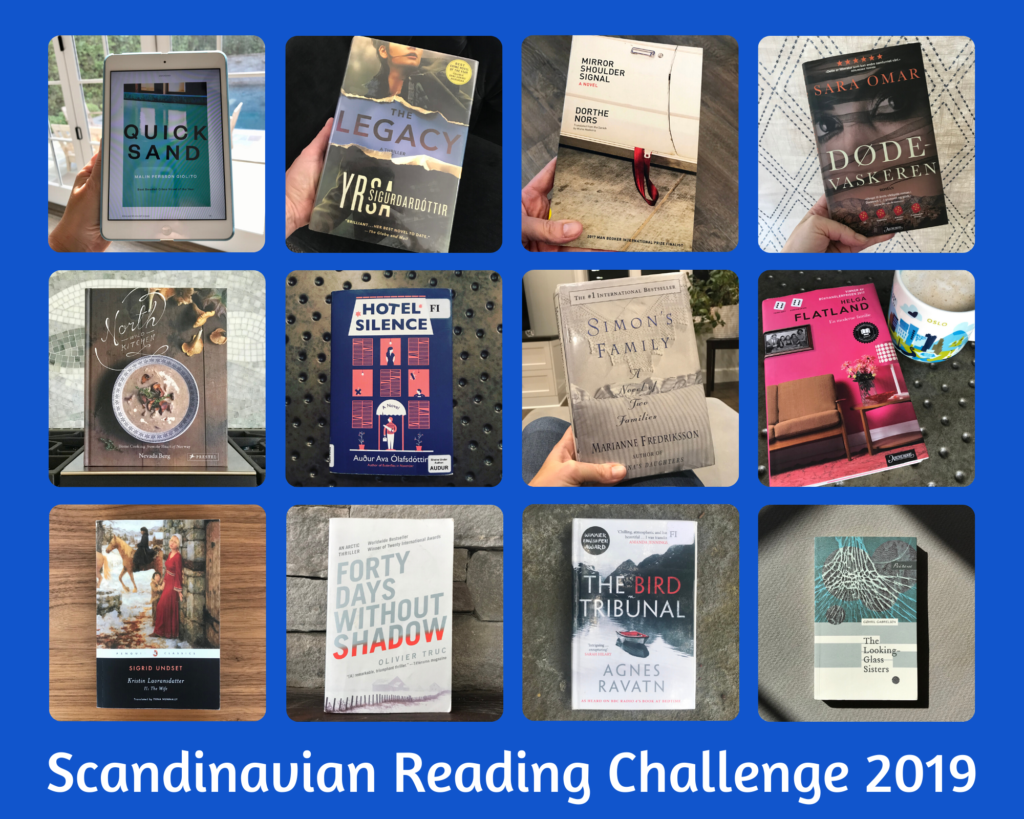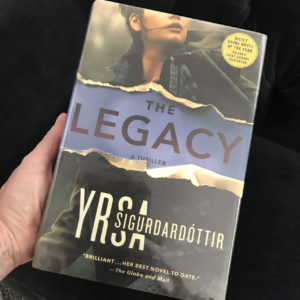This was the second year of my Scandinavian Reading Challenge and it continued to be a great motivating factor to read new and old Scandinavian books. This year I sprinkled in a couple of Icelandic reads as well. Below I’ve compiled my thoughts from throughout the year about what I read for the challenge. It was sometimes hard to choose what to read for a prompt, therefore the prompt “A prompt from a previous year’s challenge” appears as a bonus prompt in the 2020 Scandinavian Reading Challenge so I can revisit those books. If you’ve read any books for the 2019 prompts, I’d love to hear in the comments.
1. A book set in a Scandinavian capital
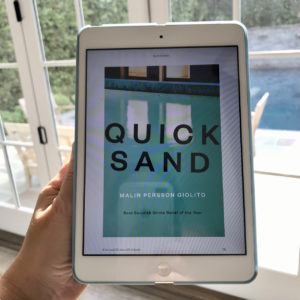
🇸🇪 Quicksand
By Malin Persson Giolito (tr. from the Swedish by Rachel Willson-Broyles)
The author takes us into the mind of 18-year-old Maja who’s on trial for her involvement in a school shooting in a wealthy suburb of Stockholm, Sweden, that left her boyfriend and best friend dead, along with others. We alternate between her time in the jail cell and in the courtroom along with flashbacks to her life leading up to the shooting. The book started a little slow, but as I got further into it, it was a page-turner that had me very eager to find out how it all could have come to this. Many timely issues to consider: school shootings, mental health, immigration, gun violence, wealth, class, parenting… We had a great discussion at my Scandinavian Book Club meeting. I highly recommend it! (This book has been adapted into a TV series on Netflix.)
Other books I considered for this prompt:
- Oslo, Norway: Seven Days in August by Brit Bildøen (tr. Becky L. Crook)
- Copenhagen, Denmark: Mirror, Shoulder, Signal by Dorthe Nors (tr. Misha Hoekstra)
2. A Nordic Noir novel
🇮🇸 The Legacy: A Thriller (Children’s House #1)
By Yrsa Sigurdardóttir (tr. from the Icelandic by Victoria Cribb)
Iceland has always intrigued me, so I’ve been eager to add an Icelandic author to my repertoire. There wasn’t much specifically Icelandic about this novel other than the names of the characters which are very unique (a pronunciation guide is included), but it certainly was a good example of Nordic Noir. The main characters, child psychologist Freyja and police detective Huldar, have to work together to solve the grisly murder of a mother whose 7-year-old daughter is the only witness to the crime. More murders follow, equally grisly, though never bloody. I really liked the child psychologist Freyja and I was impressed with the author’s creativity with the murders, the characters’ stories, and how it all came together at the end. This is the first in the Children’s House series, and number two, The Reckoning, is on my TBR list.
Other books I considered for this prompt:
- Blind Goddess (Hanne Wilhelmsen Book 1) by Anne Holt (tr. from the Norwegian by Tom Geddes)
- The Redbreast by Jo Nesbø (tr. from the Norwegian by Don Bartlett)
3. A book published in the last year
(either in original language or in translation)
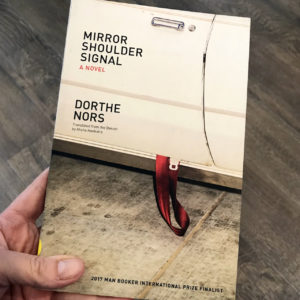
🇩🇰 Mirror, Shoulder, Signal: A Novel (in English June 2018)
By Dorthe Nors (tr. from the Danish by Misha Hoekstra)
Sonja, an awkward 40-something translator of violent crime fiction, is still trying to acclimate herself to life in Copenhagen after a childhood in a small, rural town. She struggles with positional vertigo, an estranged relationship with her sister, and late-in-life driving lessons. The book has received many mentions, among them 2017 Man Booker International Shortlist, 2019 Dublin Literature Award Longlist, and 2018 New York Times Notable Book, but unfortunately, I was not a fan of this one. For those looking for an off-beat character study, this would be a great pick. I was too distracted by the writing style (unrelated clauses in the same sentence) and language (unnecessary vulgarity at times) to fully appreciate the story. It did provide good fodder for our Scandinavian Book Club discussion, though, which is always a plus!
Other books I considered:
- The Katharina Code (The Cold Case Quartet, Book 1) by Jørn Lier Horst (tr. Anne Bruce, August 2018)
- The Boy at the Door by Alex Dahl (July 2018)
- The Courier by Kjell Ola Dahl (tr. Don Bartlett, February 2019)
4. A book by a non-native Scandinavian author
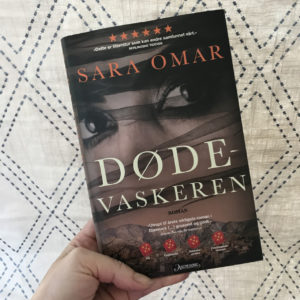
🇩🇰 Dødevaskeren (The Dead Washer)
By Sara Omar (tr. to the Norwegian from the Danish by Hilde Rød-Larsen)
This is an amazing and heartbreaking novel dealing with the oppression of Muslim women, in particular in the Kurdistan region of Iraq. The author was born and raised in Kurdistan but had to flee as a young teenager in the late 1990s due to war. She eventually made her way to Denmark. I was very eager to read this book when I first learned about it from the Scandinavian bookstagram community. When it was published in Denmark in 2017, it was hailed as “the year’s most important book.” The author had to have police protection due to the backlash from the anti-Islam content. It’s about a girl named Frmesk born in Kurdistan in 1986 (just like the author; I wonder how much of the novel is autobiographical). She is unwanted by her father because she’s a girl and is sent to live with her mother’s parents because the mother is afraid for the baby’s life if she stays at home. Her grandparents are very kind, loving, open-minded “parents” to Frmesk in a world where the Koran rules and women’s rights and freedom are non-existent. The story moves between Frmesk’s life as a young child in her grandparents’ household and Frmesk’s life in Denmark 30 years later when she’s alone in a hospital bed for unidentified procedures. Real events, such as the 1988 Halabja chemical attack, are included in the story. It was an extremely engrossing and engaging story despite the difficult subject material. I certainly hope it’s translated to English so it can engage many more readers. Sara Omar’s second book, Skyggedanseren (The Shadow Dancer), a follow-up to the first, was published in Denmark in November 2019 and I’m very eager to read it when it’s released in Norwegian in May 2020.
Other books I considered:
- Demian Vitanza (Norwegian/Italian) – This LIfe or the Next: A Novel (tr. Tanya Thresher)
- Berit Ellingsen (Korean-Norwegian) – Not Dark Yet
5. A non-fiction book about Scandinavian culture
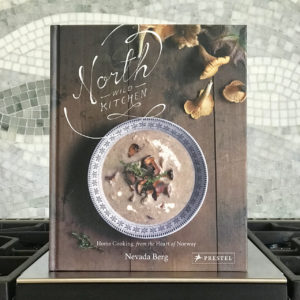
🇳🇴 North Wild Kitchen: Home Cooking from the Heart of Norway
By Nevada Berg
I was already a fan of the author’s blog North Wild Kitchen so when she published a cookbook I knew I would buy it. The author is from Utah, and in the introduction, she explains how she ended up buying a mountain farm “deep in the belly of Norway” and began exploring the country’s cuisine. I enjoy how the cookbook is organized thematically by source reflecting Norwegian food culture: foraging, fishing, farming (“Seteren”), harvesting, hunting, storing (“Stabburet”), camping, and baking. It includes both traditional Norwegian meals as well as Norwegian-inspired recipes. I was happy to see many favorite foods, such as “boller” (sweet buns with cardamom), “grovbrød” (multigrain bread) and “bløtkake” (layered cream cake with fresh berries), as well as some new-to-me dishes like “plukkfisk” (fish and mashed potatoes with roasted carrots, sauteed leeks, and bacon) which seemed reasonable to attempt at home. The commentary on Norwegian food culture is insightful, the recipes enticing and manageable (I appreciate the tips on substitutions for some of the more “exotic” ingredients like moose and grouse), and the photos are delightful. It’s a beautiful addition to any kitchen, but especially to one with a cook with Norwegian roots.
Other books I considered:
- There’s No Such Thing as Bad Weather by Linda Åkeson McGurk
- The Almost Nearly Perfect People: Behind the Myth of the Scandinavian Utopia by Michael Booth
- Scandinavians: In Search of the Soul of the North by Robert Ferguson
6. A winner of the Nordic Council Literature Prize
🇮🇸 Hotel Silence
By Auður Ava Ólafsdóttir (tr. from the Icelandic by Brian FitzGibbon)
Since this book was winner of both the Icelandic Literary Prize (2016) and Nordic Council Literature Prize (2018), I figured Auður Ava Ólafsdóttir was a good Icelandic female author to add to my repertoire of Nordic literature. It was a quiet and enjoyable story about an almost 50-year old man who feels his life has lost meaning after a recent divorce during which he also learned that his daughter is actually not his own. He travels to an unnamed war-torn country by the sea with the intent to end his life, but instead he begins to find new purpose. What was supposed to be only a few days visit with no return turns into a weeks-long stay. It’s a moving and heartwarming story of unlikely friendships as he gets to know people who have suffered much more than him and second chances both for him and the people he helps.
Other books I considered:
- Days in the History of Silence by Merethe Lindstrom (tr. Anne Bruce, Norway, 2012)
- The Ice Palace by Tarjei Vesaas (tr. Elizabeth Rokkan, Norway, 1964)
7. A historical fiction book set in Scandinavia

🇸🇪 Simon’s Family (aka Simon & the Oaks)
By Marianne Fredriksson (tr. from the Swedish by Joan Tate)
The book opens in 1939 with 11-year-old Simon who lives in Gothenburg, Sweden. He is from a working class family and goes to school where he becomes friends with Isak, a Jewish boy from a rich family. The two families are drawn together and become an extended family that together endures the trials and tribulations of the times. The book was a little slow-going for me, but it was interesting to see what life was like for families, both Jewish and not, living in neutral Sweden during World War II. Especially interesting for me was that my maternal grandmother grew up in this area during this time (only 2 years older than Simon) and so the book gave me a glimpse of the setting of her younger life.
Other books I considered:
- Almost Autumn by Marianne Kaurin (tr. from the Norwegian by Rosie Hedger)
- Dina’s Book by Herbjorg Wassmo (tr. from the Norwegian by Nadia Christensen)
8. A Scandinavia book recommended/gifted to you

🇳🇴 En moderne familie (A Modern Family)
By Helga Flatland (tr. from the Norwegian by Rosie Hedger)
This was a complex character study of how adult children deal with the late-in-life divorce of their parents. The story begins with the whole family – grandparents, parents, and kids – on a trip from Oslo to Rome to celebrate the grandfather’s 70th birthday. What happens instead on the night of the celebratory dinner is that news of the grandparents’ impending divorce comes out. The three adult siblings – one married with kids, another struggling with fertility issues with her boyfriend, and the third a free-thinker when it comes to love and marriage – struggle very differently in coming to terms with this new reality. The story alternates between the perspectives of the three siblings with some overlap of events. It’s a deep and thought-provoking look at family relationships, perceived responsibilities, family history, and parenting.
Other books I considered:
- Blå (The End of the Ocean) by Maja Lunde (tr. Diane Oatley, released January 2020)
- Vær snill med dyrene (Be Kind to the Animals) by Monica Isakstuen (not yet available in English)
9. A Scandinavian book published before
you were born

🇳🇴 Kristin Lavransdatter II: The Wife
By Sigrid Undset (tr. from the Norwegian by Tiina Nunnally)
Last year I read the first book in the Kristin Lavransdatter trilogy and was so surprised by how much I enjoyed it. I was curious to see how Kristin’s marriage to her lover Erlend would go. Just like the first book, this one provides a thorough depiction of daily life in medieval Norway. I was a little confused by the political history of the time and had some trouble remembering and distinguishing characters, but I chose not to let those issues affect my enjoyment of the book. The story of Kristin’s life as a protective mother to seven sons, a faithful wife to a husband with questionable political intentions, and a very pious person eager to save her soul was very engaging. I definitely enjoyed the first book more, but I’m very eager to see how her life plays out in the last book of the trilogy.
Other books I considered:
- The Ice Palace by Tarjei Vesaas (1963, tr. from the Norwegian by Elizabeth Rokkan)
- Out of Africa by Isak Dinesen / Karen Blixen (1937)
10. A book written by a non-Scandinavian
set in Scandinavia

🇳🇴 Forty Days Without Shadow: An Arctic Thriller
By Olivier Truc (tr. from the French by Louise Rogers Lalaurie)
I loved the setting of this book – wintertime in northern Norway above the Arctic Circle in the land of the Sámi indigenous people of Norway, Sweden, and Finland. Even though it’s a fiction book, I learned so much about Sámi history, culture, and issues. I had no idea there was such a thing as a reindeer police! I liked the two main characters, Klemet Nango and Nina Nansen, reindeer police who are involved with solving the crime of a stolen Sámi drum and the murder of a Sámi reindeer herder. Klemet is an older officer of Sámi heritage and Nina is a young Norwegian woman fresh out of police school. They are a good pair. I was not a fan of the male perspective and the language usage at times. Also, the male chauvinist behavior by a couple of the side characters was off-putting. However, overall it was a very enjoyable and interesting read. It’s the first in a series written in French and I hope the rest of them are translated into English.
Other books I considered:
- The Moon Is Down by John Steinbeck
- Norwegian by Night by Derek B. Miller
11. A Scandinavian book you’ve been
meaning to read

🇳🇴 The Bird Tribunal
By Agnes Ravatn (tr. from the Norwegian by Rosie Hedger)
I was drawn to this book the minute I saw the cover picturing the desolate fjord with the lone rowboat and only a pop of red for color, and the title’s reference to birds intrigued me as well. Both aspects – setting and birds – turned out to play major roles in this psychological suspense story. Allis abruptly leaves her life in the city and takes on a job as a housekeeper and gardener at the isolated home of Bagge, a man awaiting the return of his wife. Bagge is a quiet, mysterious man. They develop an uneasy, tense relationship that eventually comes to a boiling point. I was drawn in from start to finish; it didn’t disappoint.
Other books I considered:
- Two Sisters: A Father, His Daughters, and Their Journey into the Syrian Jihad by Åsne Seierstad (tr. from the Norwegian by Seán Kinsella)
- Tante Ulrikkes vei (Our Street) by Zeshan Shakar (not yet available in English)
12. A book from a favorite or unread challenge from last year’s challenge (A book set somewhere in Scandinavia you would like to visit)
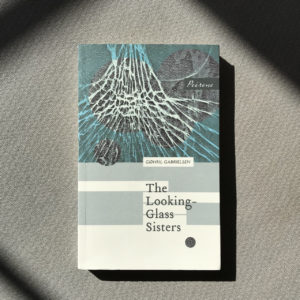
🇳🇴 The Looking-Glass Sisters
By Gøhril Gabrielsen (tr. from the Norwegian by John Irons)
Despite not liking any of the characters, not even finding anything remotely redeeming about any of them, I was drawn into this novella about two middle aged sisters and their toxic relationship. At the age of 24 upon the death of their parents, the older sister is thrust into the role of caregiver for her younger physically disabled sister, aged 19. They live alone in an isolated area far up north in Norway for many years until an outsider arrives and upsets their status quo. At the start of the novella, the younger sister has been banished to the attic and is thinking back a year explaining how she ended up there. The story is entirely from her perspective and over time the reader begins to question her reliability. It’s a story of loneliness and yearning for love and attention. It’s dark and unlike anything I’ve ever read and very discussion-worthy.
Highlights of 2019:
🙌 Reading new-to-me Norwegian authors Agnes Ravatn, Helga Flatland, and Gøhril Gabrielsen
🙌 Continuing the Kristin Lavransdatter trilogy
🙌 Adding Icelandic authors to my Nordic repertoire
Goals for 2020:
🥅 Continue to read new-to-me Norwegian authors
🥅 Seek out more Danish literature
🥅 Share reading on Instagram more regularly
Won’t you consider joining me with my 2020 #ScandiReadingChallenge? No need to commit to the whole challenge, just as much as you can. All levels of commitment welcomed!

